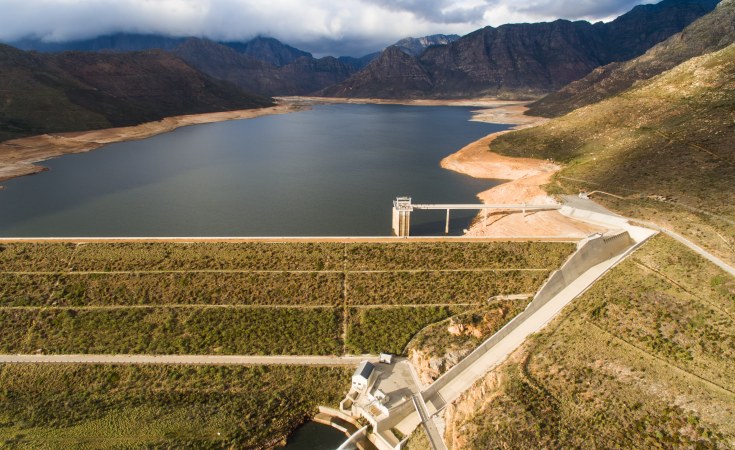The weekly status of reservoirs released by the Department of Water and Sanitation show that the country's dam levels are continuously declining when compared to same period last week.
In a statement on Wednesday, the department reiterated its call for the public to utilise water with caution as the winter season normally has minimal amount of rainfall.
"This week, the overall storage capacity of the country's water level sits at 94.4%, a minor decrease from last week's 95.4%, and a significant improvement from last year's 84.7%," the department said.
The Integrated Vaal River System (IVRS) recorded a minor enhancement from 102.1% last week to 102.4% this week while Algoa, Bloemfontein, Amathole, Orange, Cape Town, Polokwane, Luvuvhu and Umgeni Water Supply Systems have all declined week on week.
Water Supply Systems that have improved in water levels included Umhlathuze, Klipplaat, and Crocodile West, whereas Butterworth and Crocodile East are steady and unmoved at 100.1% and 100.6%, respectively.
Seven out of nine provinces have recorded reductions in water levels. They include Free State as it moved down from 105.2% to 103.4%, Gauteng recorded a reduction from 102.0% last week to 101.5% and KwaZulu-Natal dropped from 93.0% last week to 92.0% this week.
Limpopo dropped slightly from 89.1% to 88.8%, Northern Cape continues to plummet from 112.1% to 110.9%, North West dwindled from 80.1% last week to 78.5% this week, and the Western Cape lessened from 53.9% to 53.4%.
The only provinces that marginally escalated in water levels is the Eastern Cape, increasing from 67.1% to 67.2%. Mpumalanga is fixed and unchanged week on week at 95.3%.
"Vaal and Grootdraai Dams, which are part of the IVRS, have slightly dropped from 107.1% to 106.5% and 102.6% to 102.2%. Both Gariep and Vanderkloof Dams which are part of [the] Orange River Water Supply System have recorded declines from 106.0.% and 106.9% to 101.6% and 105.2% respectively.
"In the floods hit KwaZulu-Natal, Albert Falls Dam, an integral part of the Umgeni Water Supply System, which supplies water to eThekwini metro and surrounding areas dropped from 101.7% to 101.0%. Midmar which is also part of Umgeni moved down moderately from 100.7% last week to 100.6% this week," the department said.
Kouga Dam as part of Algoa Water Supply System is critically low at 12.9% moving further down from last week's 13.1%, while Gubu Dam which forms part of Amathole Water Supply System has somewhat improved from 100.6% to 100.9% this week.
"Roodeplat Dam, which is the component of Crocodile West supplied by Pienaars River, has decreased from 101.0% last week to 100.7% week on week.
In the Western Cape, Berg River dropped from 68.6% last week to 67.9%, and Clanwilliam Dam stands at 31.4% from 32.6% last week.
"Flag Boshielo which is part of [the] Polokwane Water Supply System has decreased from 104.7% to 103.2%, De Hoop is unchanged at 100.4% and Nandoni recorded the a slight decline from 102.0% to 101.6%.
"In Mpumalanga, Nooitgedacht, Dam which is part of the IVRS supplied by Komati River has soared from 96.0% to 98.4%, Kwena Dam which is part of Crocodile East Water Supply System is moderately down from 100.6% last week to 100.5% this week," the department said.


